
Kate Snyder, Ashwin Mohan, Celina Abu Nasr
Thera Castellon Fernandez, Sanaya ElMallawamy, Celina Abu Nasr POLITICS
Sasha Collins, Addison Capali, Makkiyah Khan, Ashwin Mohan RE
Sasha Collins
Kate Snyder, Anna Tsekos
June Kim, Nashwan Nimit, Sanjay Mekapati
TECHNOLOGY
Makkiyah Khan, Ray Lee, Mohammed Khouqeer
WEATHER
Kyle Hu, Sanjay Mekapati, Mokika Sonali
GAMES
Jiya Parekh

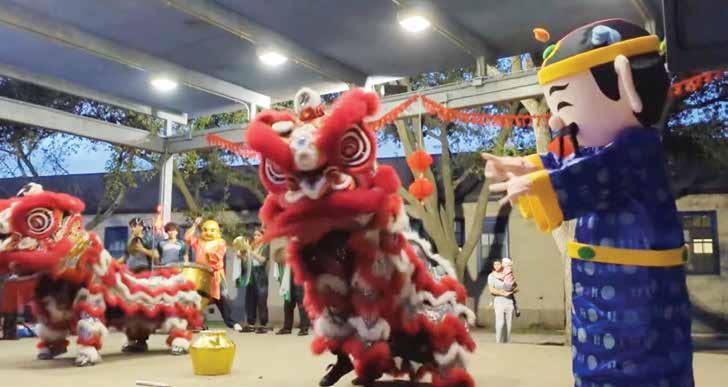
COMMUNITY GATHERINGS
Getting together at Roberts this school year
BY MRINALINI LEVIN-SRINIVASAN
Throughout the school year, Roberts hosts community gatherings for children and their families to enjoy. Here are some events that help make our time at Roberts special.
THE INTERNATIONAL FESTIVAL
One of the best things about Houston is that it is very diverse. On October 20, 2023, Roberts families and community members representing 38 different cultures came together with food, activities, and a stunning talent show where students showcased their abilities. Fifth grader Noah Barbee said, “I liked trying all the different, new foods.” The International Festival was a chance for everyone to discover food and traditions they did not know were out there.
THE CAMP-OUT
An endless recess, the Roberts Campout was an exciting occurrence for the 489 people who attended on November 3, 2023. For most, this event was a chance to meet people they had not met before or to play with those they had. After watching the movie Up, students and their accompanying adults pitched a tent and slept on the Roberts field for the night, belly full of pizza and hot chocolate. Then, in the morning, the attendees enjoyed donuts and played some more at the playground and on the field. The Camp-Out not only brought joy to many people but raised $1,500 for the school.
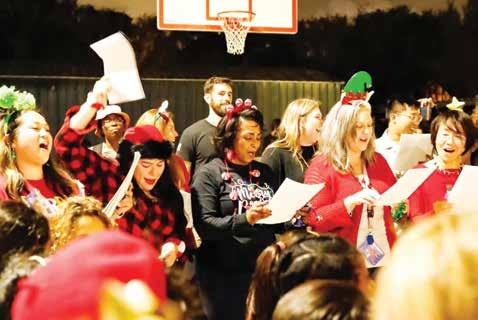
THE WINTER FESTIVAL
The Winter Festival on December 8, 2023, had plenty of activities. Students and their families ate delicious cookies, drank hot chocolate with marshmallows, and watched a short film. There were also games of tag in the field and some caroling for families and teachers to enjoy together. All were great options. Fifth grader Madalyn Le said,” It was so fun listening to the caroling. Lots of teachers joined in!”
THE SPELLING BEE
Many students qualified for the Roberts Spelling Bee, which is a competitive activity. They had to take a written test and spell several difficult words like “Popocatepetl.” Those who made less than four mistakes competed in the school bee on January 17, 2024. I
was one of them, and it was a great experience – until I misspelled demure! Fifth grader, Ryan Cho, placed first out of the 24 participants. Spelling the word, “hydrate,” sealed his victory. Ryan competed in the district spelling bee on February 7, 2024. Way to go, Ryan!
THE LUNAR NEW YEAR CELEBRATION
On February 9, 2024, the Roberts community came together to celebrate Lunar New Year. There was a lion dance performance and Roberts families and friends could bring $1 to feed the hungry lion who would bless them with good fortune.
The school community had amazing gatherings! This autumn and winter are off to a great start. What parts of these events did you enjoy? Email us!
Inspired. Inquisitive. Reporting on our world from the Roberts Elementary view. ROBERTS ELEMENTARY SCHOOL, HOUSTON, TEXAS VOLUME III, ISSUE 1 FEBRUARY 2024 PAGE 05 SHHH! SILENT LUNCH THE SECRET LIVES OF TEACHERS PAGE 03 Sanjay Mekapati EDUCATION 4
ELEMENTARY THOUGHTS 5
Madison Capali, Young Duan
ENTERTAINMENT 6 Christopher Zeng FOOD 7
Hu, Natalia Chavez HEALTH 8
Levin-Srinivasan,
LIFESTYLE 9
Kyle
Mrinalini
Martin Wang
10
DICULOUSLY FUNNY 11
12
SCIENCE
SPORTS 13
14
15
16
//GNR
Lunar New Year Celebration
Winter Festival //GNR
EVENTS
COMMUNITY

Falling in love with curiosity
Iam filled with bliss each year we can publish Good News REview after our semester-long journey of learning together. Our newsroom is a haven for students’ curiosity, hard work, dedication…and lots of laughter and dancing!
As you know, our generation of information seekers get their news from X, formerly called Twitter, Instagram, Facebook, and other online outlets. So, journalism and news media have endured a slow, yet steady decline, especially in print publications. According to the Alliance of Audited Media and Pew Research Center, the circulation of newspapers decreased about 14 million from 2016 to 2022.
It is difficult to make sense of the dramatic drop from almost 35 million to just under 21 million circulated newspapers. Numbers of visitors to newspaper websites are down also, and it seems pretty unbelievable considering our generation lives in the Information Age.
We curiously set out to leap from the Industrial Revolution to the futuristic vision of Claude Shannon, the father of the Information Age and author of “The Mathematical Theory of Communication,” in 1948.
So, it is our calling as members of the Information Age to seek information – with curiosity as our guide.
The Good News REview newsroom buzzes with the vibrance of endless curiosity.
It is the beating heart of the students’ reporting and encourages our excellence. Our writing process begins with questions.
We want to report stories that demonstrate how inspired we are to inform and how committed we are to the IB Principle, inquisitive.
Falling in love with curiosity is the theme for this special Valentine’s Day

and Black History Month issue.
When we are curious, we abandon the temptation to be shallow thinkers, to apply stereotypes, or to accept a surface understanding of hard topics or unfamiliar neighbors.
I want my students to remember what W.E.B. DuBois, a 19th- and 20th-century African American author and philosopher said, “Ignorance is a cure for nothing.”
And during these times of global and national conflict, where lines have been drawn, and at times we feel like we are being forced to pick a side, we reject ignorance. We believe our willingness to be curious leads us to our journalistic creativity.
So, Good News Review has fallen in love with curiosity all over again! Because we are curious, we keep Good News alive and thriving.
Enjoy Roberts Elementary Good News REview Issue V with our new games by Jiya Parekh. We hope to spark your curiosity with questions like: What is self-expression? in our new feature, Passion for Fashion, What is the difference between the words we hear so often: virus and bacteria? How do we engage in war?, and How can we improve as a Roberts community?
 FRAN-VICTORIA STEPHENS EDITOR
FRAN-VICTORIA STEPHENS EDITOR
Email us when you finish your game, ask your questions, or want to share your thoughts. schoolnewspaper@robertspto.org

Inspired. Inquisitive. Reporting on our world from the Roberts Elementary view.
•
• Politics
• REdiculously Funny
Sasha
•
Kate
• Sports
•
•
•
•
schoolnewspaper@repto.org •
T
Inc.
Community Mrinalini Levin-Srinivasan, Anna Tsekos, Sanjay Mekapati • Education Madison Capali, Young Duan • Elementary Thoughts Kate Snyder, Ashwin Mohan, Celina Abu Nasr • Entertainment Christopher Zeng • Food Kyle Hu, Natalia Chavez • Health Mrinalini Levin-Srinivasan, Martin Wang
Lifestyle Thera Castellon Fernandez, Sanaya El-Mallawamy, Celina Abu Nasr
Sasha Collins, Addison Capali, Makkiyah Khan, Ashwin Mohan
Pages
Collins
Science
Snyder, Anna Tsekos
June Kim, Nashwan Nimit, Sanjay Mekapati
Technology Makkiyah Khan, Ray Lee, Mohammed Khouqeer
Weather Kyle Hu, Sanjay Mekapati, Mokika Sonali
Games Jiya Parekh
Publisher Roberts Elementary School Houston, TX;
Designer Katrina
Lallier/TK INK,
Find Curi Osity as you read Issue V. How many Curi Ositys can you find? There will be a raffle for all those students who send in the correct number. And one winner will be rewarded with a prize!
The Secret Lives of Teachers
BY ANNA TSEKOS
Teachers. What would school be like without them? Complete chaos. We rely on them to keep us students in check. However, all teachers have a life to juggle along with all the papers, grades, curriculum, and planning that they have to work on to educate the young minds at Roberts.
Teachers are the base of all schools. They are one of the most important parts of student education. Without them, we would not be able to read, write, or do math. You do not get this done by sleeping in late, as I found out after talking to several teachers. The common time to wake up seems to be around five o’clock. This job is often achieved by late nights. Many teachers come home at 5 to 6 pm.
Teachers often have family to take care of along with their students and planning. Many even have children of their own. For example, Ms. McHugh, a second-grade teacher, has a husband and three kids (ages 7, 5, and 1) at home. Kindergarten teacher Ms. Waterman also has a child to take care of, two-year-old Noah. Ms. Wu, who teaches first grade, has her parents visiting from China, along with having two older children. While not all teachers have children or a spouse, they are all busy at home. Some even have second jobs. For example, art teacher, Ms. Jenkins, who, according to the PTO Newsletter, dabbles in other side hustles, including art making, private art lessons, and art parties, and she hosts an art camp every summer. Ms. Davenport, who teaches dance, is also a second-year member of the Houston Texans Cheerleaders.
Luckily, there are things that students can do to help their teachers. Ms. McHugh says that things students can do are, “always try their best, be respectful, and follow voice levels.” More su-
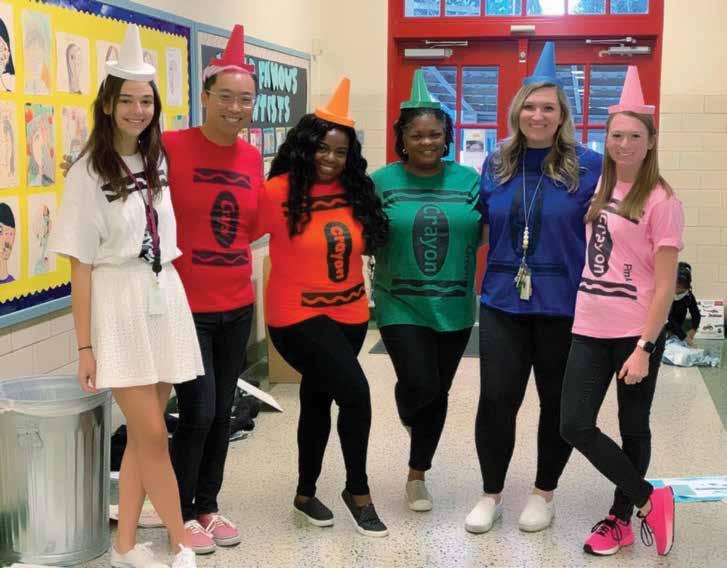
Roberts' educators
ggestions came from other teachers, including being responsible. Ms. Waterman also said that parents can make her life (and that of other tea-
chers) easier by having their children at school on time and collaborating with her to help children academically and socially.
How can you help your teacher have less work to do?

Students Participate in First Science Fair
BY SANJAY MEKAPATI
Have you heard of it yet? Roberts students can participate in a science fair for the first time ever!
Mr. Coronado, our new science teacher, will host this new-to-Roberts event on Thursday, February 22, 2024.
“I wanted to add something to this school,” said Mr. Coronado.
Mr. Coronado gave the third, fourth, and fifth graders the green light to begin working on their projects in December.
Each student participating determined a hypothesis and experimented to find out whether his or her hypothesis was correct. 21 students will participate this year. Third grade has the most participants, and fourth grade has the least.
There are multiple categories, and those categories are split up by grade level.
According to Mr. Coronado, student participants will be exploring physical science, environmental studies, earth science, and biology
topics in this year’s science fair.
You might not be participating in the science fair this year, but who knows? Mr. Coronado might change the participating grades next year since he would like to continue our new science fair tradition.
Mr. Coronado shared, “My hope is that the science fair will be an annual event. I wanted to give students practice and exposure to the scientific method, testing a variable, making valid conclusions, and presenting to adults.”
Although there is not a district or regional science fair for student winners to advance, I think all students should get involved because it will let you have something that is outside of school that you are interested in, and it will have a prize. Students can win recognition and prizes by simply following the rules.
Participating students will be featured in the Roberts yearbook and receive certificates and ribbons.
Now, you just have to wait and find your favorite experiments to use in your daily life.
Participants
//GNR GRADE TEACHER STUDENTS
3 E. Johnson Alison Voie, Yufan Yan
3 Luera Holly Pang, Heru Lee, Taha Haroon
3 Peng Anika Jenkins, Yarsolav Garbunov, Murat Purnak
3 Brigman Joshua Michael Yu, Christopher Cheng, Amina Ortiz, Alexander Luo, Daniel Dou
4 Hunter Jayden Le
5 Vuong Samuel Chiang, Alexander (Sasha) Collins, Ashwin Mohan, Young Duan
5 Moliver Mrinalini Levin-Srinivasan
5 Adeyemi Kyle Hu & Sanjay Mekaputi
COMMUNITY 3 THE GOOD NEWS REVIEW | FEBRUARY 2024
EDUCATION
Battle of the Math Books
How the students, teachers, and parents compare the new and old math books
BY MADISON CAPALI
Last year, Roberts changed math books. We went from Go Math to Eureka, but have you wondered why?
Go Math was a fun math book. But Eureka might be even better at teaching than Go Math. Turns out, it depends on your understanding of math and how it should be taught.
Some parents, students, and teachers are having a hard time understanding the Eureka way of teaching.
One parent said, “I didn’t approve of Eureka at first, but then I started to adapt to it. I think Eureka’s goal is to help students through pro-
cesses with varying approaches. This new way of thinking will prepare students for the age of information systems.”
Another parent said, “I think Go Math is better because it is more suited for young students.”
There are plenty of differences between the two books, but here are a few differences I have noticed from my experience and research.
Go Math teaches one step at a time to get the equations. Eureka highlights the understanding of math concepts. Eureka takes a bit more time to understand and is more complex than Go Math. Go Math takes a more straightforward approach to learning.
I asked two students if they enjoyed lear-
ning with Eureka or Go Math.
The fourth-grade student replied, “I think that since Eureka has the same type of practice every day, it’s a bit better.”
The fifth-grade student replied, “No, I do not like Eureka because I think it is a bit boring.”
I asked two teachers if there was anything they would change about Eureka.
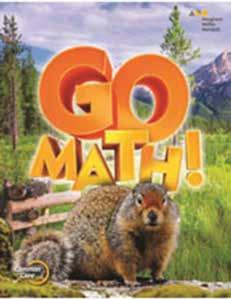
Teacher one said, “I personally am not a fan of Eureka. It does not use real-world vocabulary.”
Teacher 2 replied, “I would change many things about Eureka. The sequence, many times, does not progress in a logical way for students to learn. Format. I love structure, but Eureka is far
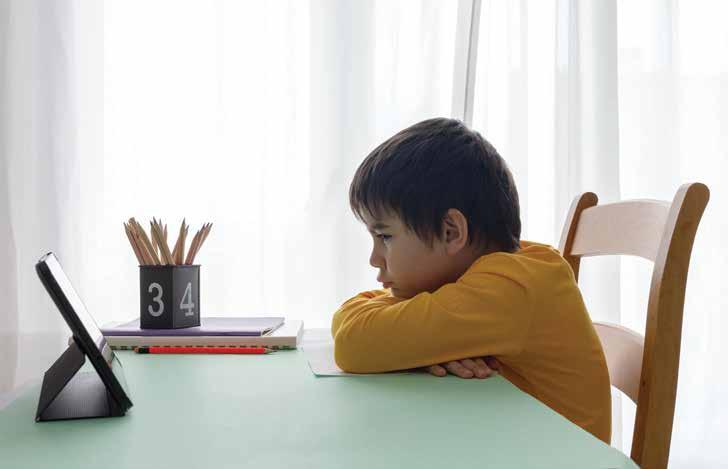
Bad grades? Here’s what you can do to change that
Creating a good after-school routine
BY YOUNG DUAN
Do you dread opening Tuesday folders? Is it because you know you have bad scores?
According to the National Society of High School Scholars, the reasons for bad grades include a lack of preparation, missed assignments, lack of motivation, not focusing enough on school, not having a good study routine, or not having good organization.
Among these reasons, having a good study routine and getting organized are two ways you can start today to turn those bad grades into be-
tter grades.
Let’s look at a few after-school routines:
STUDENT #1: Watches YouTube after school
STUDENT #2: Comes home eats snacks, takes a nap, then tries to do a bit of homework.
STUDENT #3: Plays video games until one of his parents orders the homework to be done.
All these students do something like playing video games, eating something, or watching YouTube before they get to their homework.
They are delaying the homework.
When you delay something, it gets piled up with all of the other things that you need to do. The assignment can easily be forgotten.
Then, you might have nothing to turn in, and even worse, you do not get to practice what you
learned in school that day.
When you get home from school, try getting right to the assignments that either are due the following day or very soon.
Organize your school supplies, folders, and assignments before bed so you do not have to search for your assignments the next morning.
Practice going to sleep earlier to ensure you wake up rested and on time.
If you do not get enough sleep, your brain will not be rested. But if you sleep well, during the next day, you will be able to focus on all of your classes.
Focusing at school is a great first step to a positive at-school routine to add to your new after-school routine for better grades.
Good luck and let us know if you tried these after = school routine suggestions!
too structured to keep the interest of an elementary-aged student.”
Our Roberts community has a new way of mathing, and just as with all things, it will take some time to get used to something new and different. What do you think about the new and old math books?
A PRINCIPAL HIGHLIGHT
Ms. Epps helps Roberts thrive
BY YOUNG DUAN
A principal’s life is not very easy as there will be troublemakers in the school that make it hard to lead.
Although a principal’s life might be difficult, Roberts’s principal, Ms. Epps, was inspired to become a principal when she was a teacher. She enjoyed being in charge of teachers and the curriculum used to support student learning.
As a principal, Ms. Epps helps Roberts thrive by getting to know the students. She loves learning about what interests them and what can help them become better students.
Another thing she does to help the school thrive is having staff members who help the students reach their full potential.
“The most important thing to me is that students get a good foundation and have fun,” Ms. Epps shared.
The reason there are field trips to NASA, monuments, and more is that Ms. Epps believes that fun things, like field trips, can connect the students to what they are currently studying in school.
As an IB school, Ms. Epps lets students do things relevant to the real world.
Managing the learning and safety of six grade levels of students is a very serious job and requires Ms. Epps to be very clever with her time.
Ms. Epps wakes up at around 4:30 a.m. to begin her day and goes to school at around 6:30 a.m. Then, Ms. Epps gets off work at around 4:15.
After leaving school, she cooks to calm down and relax from the busy day.
As you can see, Ms. Epps works hard to help the students and teachers.
You can help Ms. Epps by giving your best effort, sharing your kindness, and being a thoughtful learner.
THE GOOD NEWS REVIEW | FEBRUARY 2024 4
ELEMENTARY THOUGHTS
Making Fundraisers Fun for All
BY KATE SNYDER
DISCLAIMER: I understand things might be more complicated than what I see as a fourth grader. But I hope our Roberts community considers some of my ideas to give everyone a chance to contribute to our awesome school - without any barriers.
We usually do not question how the school raises funds and what they do with the money, but have you ever wondered if we could improve our fundraising?
Let’s talk about Fun Run.
I have always been confused about Fun Run. Parents, friends, and family donate hundreds of dollars. Then, parents come to watch kids run laps. The kids win prizes they could probably buy on their own. I am not sure that makes sense.
Is there a way we can sweeten the deal for the donator and for the fundraiser?
Hundreds of dollars for the school to buy new iPads, which we love, but nothing to truly reward the students’ hard work in fundraising or the donator’s kindness.
The way it is now, Fun Run PTO volunteers hand out Fun Run prizes in the classroom for those who are raising the most money. So, everyone sees whose friends and family are donating the most and whose are not. The kids whose parents have different ethical or financial priorities might feel left out or embarrassed.
So, I have ideas. We can make money, get all of Roberts’s students involved, and make sure Roberts's friends and families get something for their contribution.
1. Bake Sale – Bake sales reward the buyers’
generosity with treats, and Roberts gets the money!
2. Yard Sale - We could sell old items no longer needed. Students can donate items, too.
3. Arts and Crafts Market – We could sell donated artwork from Roberts’s students.
So now, we have all this money from selling treats, yard sale stuff, and art, but what should we do with it?
A student at Roberts shared, “My classroom’s AC broke down shortly after Fun Run. It took weeks for the school to fix it.” I am not sure if we can use our fundraising money on broken ACs, but I have ideas of what we could do with the money.
1. Rainy-day fund (money put aside to use in unexpected cases)
2. More books for the library
3. School supplies for students (so teachers do not have to spend their own money on them)
So, after doing the same fundraisers every year, next year could be different. We could even add these fundraisers to our fun annual events. Who knows what might happen?
Just remember, you can change things!
Note to the reader: The Good News REview journalists really appreciate the fundraisers that give us a chance to learn and write about things that interest us like including everyone in our fundraising!

Psst ... Perspectives of the Silent Lunch
BY ASHWIN MOHAN
If you are a student here at Roberts, you already know, silent lunch has been going on for quite a while now, and you may be wondering why or wondering if it is a good or bad thing.
A STUDENT’S PERSPECTIVE
Many students complain that silent lunch has been happening almost every day.
According to a fifth-grade student who did not want to share their identity, “The teachers think we are too loud. We need to let our energy out, and they only let us have 40 minutes of recess. I propose that we sit outside like we did in third grade.’’

A PRINCIPAL’S PERSPECTIVE
Although many students do not like silent lunches, many administrators feel like it is necessary.
According to the principal, Ms. Epps, “We have to have order in the lunchroom. That is non-negotiable. The first ten minutes of lunch must be silent for students to eat. If you have silent lunch after the first ten minutes, it is because you or your classmates were misbehaving.’’
EXPERTS’ EXPLANATIONS
After those two different perspectives on this matter, let’s go more into depth on this topic.
According to Washington’s King County Green School program research summary on the
effects and trends of extending the 30-minute lunch period for K-12 graders, “School lunch periods provide time for social and emotional development where students can build community and help each other.”
The summary shares expert references for the importance of lunch stating, “Lunchtime should be a time for students to relax, breathe, slow down, and de-stress from morning classes. Research shows that brain breaks can boost a student’s motivation and improve a student’s mood.’’
The students, teachers, and administrators have different priorities in the lunchroom. Reading this, what are your priorities for school lunchtime?
‘Do Your Business, Flush, Wash, Leave’
Bathrooms Matter
BY CELINA ABU NASR
The bathrooms in Roberts Elementary need help. Can students help keep the bathrooms clean? Yes, we can! We can all do our part to keep our bathrooms clean. Bathrooms matter.
Ms. Yenny said, “The custodians clean the bathrooms every evening. Why do students throw things on the floor and make the bathrooms unsanitary?”.
Fifth graders, Naya (Shewcraft), Sanjay (Adeyemi), and Mrinalini (Moliver) agree that when students go to the bathroom, they think it is an opportunity to play around.
They also believe that students are making it harder for the custodians to clean.
“I have seen broken toilets, toilet paper on the floor, bugs, and only two toilets with working flushes,” said Mrinalini about the conse-
quences of students not taking their time in the bathroom seriously.
When he has chosen to use the school bathroom, Sanjay feels in a hurry like the floor is lava each time.
Naya and Rayne (Lara), sisters in the fifth and fourth grade, said they have seen napkins on the floor and wrappings.
Naya, Sanjay, and Mrinalini are not alone in their feelings about the bathroom. According to a 2019 Bradley Corporation Student Healthy Hand Washing Survey, “nearly half of students” (9th-12th grade) surveyed across the country, rated their bathrooms as “fair” or “poor.”
The same survey reported that 32% of those high schoolers surveyed chose not to go to the bathroom based on the condition they perceived from the school bathrooms’ appearance.
So, school bathrooms seem to have a negative reputation no matter where the bathrooms are in the United States - even in schools with
students in higher grades.
Although Ms. Yenny shared that she has seen that the bathrooms have been cleaner lately than other days, fifth grader, Ashwin Mohan (Vuong), and Mrinalini agreed that Ms. Yenny could still use a lot more help cleaning. Our help, that is, to keep the bathrooms clean.
So, what can you do to help? Every time you go into the bathroom make sure you do not play around. As a Roberts student, you can help make it sanitary.
One message Ms. Yenny has for all the Roberts students is, “Do your business. Flush. Wash your hands, and then leave.”
Let us all tidy up our principles!
Stay Curious: Think about what you can do to be a part of the solution - students helping to keep our Roberts bathrooms clean.

5 THE GOOD NEWS REVIEW | FEBRUARY 2024
TOYS OF THE ERA
BY CHRISTOPHER ZENG
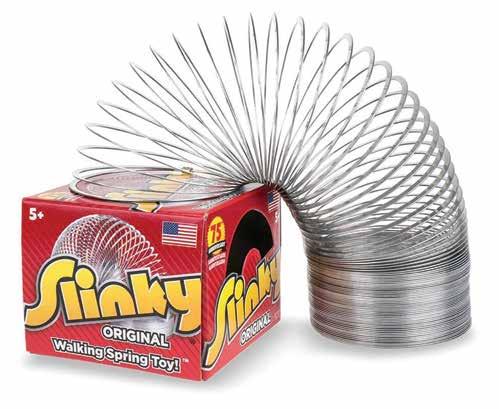
As humans develop new technology, we also develop new interests. Our minds are constantly changing, from being perplexed at one thing to being intrigued by another.
As we mature, we need constant development of the brain. We usually do that by playing with toys as they help our social skills develop. Here are some of the most popular toys that intrigue kids:

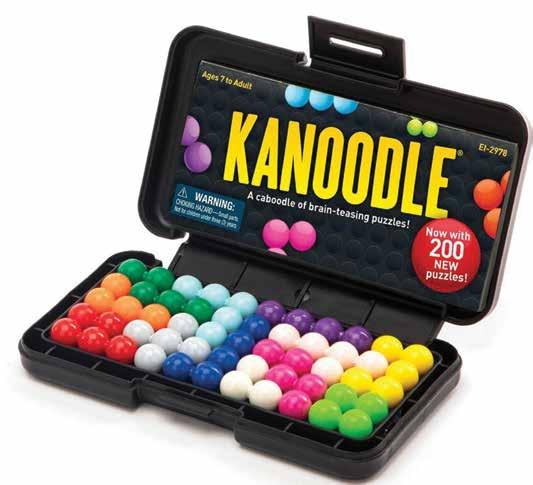
SHASHIBO SHAPE SHIFTING BOX $25.00*
The SHASHIBO Shape Shifting Box is a cube that contains 36 rare Earth magnets and can make over 70 shapes. It combines the stackability of LEGO™, the magnetic properties of Magna-Tiles, and the problem-solving of a Rubik’s Cube to create a fun toy for all kids.
THE ORIGINAL SLINKY $4.99*
The slinky has been a family favorite since 1945. It is made out of the iconic original silver and attracts adults and children from all over the world. They stretch like springs and can even walk downstairs! Slinkies are made in the United States and have been sold to more than 300 million people worldwide.
NATIONAL GEOGRAPHIC AMAZING REACTIONS CHEMISTRY SET $39.99*
This chemistry set has ingredients that can make bubbling, foaming, color-changing solutions, and more. It comes with ingredients to make solutions, kid-friendly ins tructions, and a bonus guide that contains additional experiments. This set is a
fun way to inspire a lifelong passion for science.
KANOODLE $13.99*
Kanoodle is a brain teaser puzzle game that includes 12 puzzle pieces, 200 puzzle challenges, a 48-page illustrated puzzle book, and a carrying case. It can be a breeze or a tremendous challenge. This best-selling, award-winning, brain-bending puzzle game has millions of players all around the globe engaging in this sensational challenge.
As the new year passes, toys are great gifts for friends and family. Toys can also bring families together and inspire a time of fun and learning. No one will ever forget the sense of nostalgia after they see a toy that made them extremely happy as a child.
Are you planning to get one of these toys for a friend or to play with your family? Email us to tell us what you think about it!
*Prices are from amazon.com
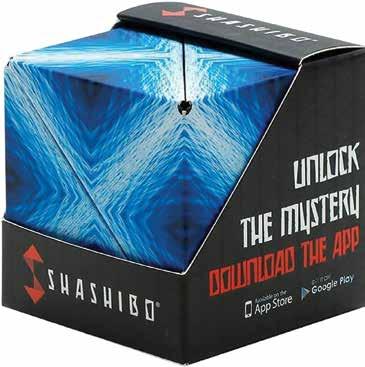
ENTERTAINMENT THE GOOD NEWS REVIEW | FEBRUARY 2024 6
FOOD
The Effects of Climate Change on Crops
BY KYLE HU
Food. We all love and need it. But what do we do when there is crop failure, droughts, rising global temperatures, and scarcity that prevents food from growing?
First, we have to address what causes these devastating events - climate change.
Climate change is the long-term shift in temperatures and weather patterns.
Such shifts can be natural, often due to changes in the sun’s activity or large volcanic eruptions. But since the 1800s, burning fossil fuels like coal, oil, and gas have driven the climate change we now experience.
Climate change alters temperatures, rain, and humidity. If we fail to act on climate change, many types of extreme weather, including heatwaves, heavy downpours, hurricanes, and wildfires will become stronger and more dangerous.
These changes significantly impact crops. Crops are plants grown as food, like fruit, vegetables, and grains. Crops need certain temperatures to grow well and reproduce.
Extreme weather events, especially high temperatures, floods, and droughts, harm crops, and then reduce yields, which are the full amount of the crop expected to grow.
According to a farmer, and my grandfather,
BY NATALIA CHAVEZ
When you think about Mexican food, what comes to your mind?
Most of us know about tacos and quesadillas, but do we ever think about the delicious Mexican desserts?
There are many sweet delicacies to choose from, but three must-try desserts are conchas, churros, and flan.
CONCHAS
Conchas, named for their round, seashell-like appearance, are a type of baked sweet bread with a hard layer of sugar and a seashell-like design topping. The topping is made out of white sugar, softened butter, all-purpose flour, ground cinnamon, and vanilla extract. The bread is made out of sugar, eggs, flour, milk, and vanilla. Now, we all know that conchas are a Mexican pastry, but their origins go back to Europe. Many bakeries were influenced by the French, who migrated to Mexico and brought their yummy French doughs and baking techniques with them. An employee from Houston’s La Victoria Bakery shared, “The concha is one of our best-selling pastries.”

Rice terraces in the Philippines.
in the Northern part of China, “Temperatures these winters have been warmer, causing parasites to live through most of the winters and decrease crop yields.”
In the United States, yields in crops like maize and corn could drop by 40% with the current
CHURROS
Churros are a fried, crunchy, sweet treat. Churros often have a filling inside, but not all do. Some churros come with a nice caramel or chocolate filling. Plain churros are sprinkled with cinnamon and sugar. Some believe that Portuguese explorers brought youtiao, Chinese fried dough, back from China in the 1500’s, and it evolved into what we know as churros. After that, churros gained popularity throughout Spain and then made its way to Mexico.
FLAN
Originating from the Roman Empire, which existed over 2000 years ago, flan is a Jello-like dessert. You might be thinking that it has the taste of Jello, but it does not. Flan has a caramel taste followed by a sweet milky taste. There is one other type of flan called chocoflan. Chocoflan is flan with chocolate cake at the bottom. Usually, flan has a thin layer of caramel on top, but chocoflan does not. Flan is made out of milk, eggs, and sugar.
Now that you have learned about some delicious Mexican desserts, go try them out at El Bolillo Bakery or La Victoria Bakery. Please let me know if you like them!

rate of climate change.
Fortunately, organizations such as the Consultative Group on International Agricultural Research (CGIAR) Research Program on Climate Change, Agriculture, and Food Security are actively working to minimize the bad effects of
BUBBLE TEA RECIPE
BY KYLE HU
Bubble Tea is a twist on traditional tea. It originated in the 1980s in Taiwan. Enjoy!
INGREDIENTS
• As much boba as you want (Boba is also known as tapioca pearls. A 2.2 lb bag can be bought on amazon.com for about $20)
• ½ Cup of whole milk
• 10 Grams of brown sugar
• 2 Decaffeinated Black tea bags (You can find them at most supermarkets.)
• ½ Cup of boiled water
• Lots of love!
Boil water. Immediately remove from heat and pour ½ cups of water over 2 tea bags. Brew tea for 4 minutes.
In a pot, pour water 1/3 of the way. When the water boils add the boba. After the boba floats, cover the pot and cook for 5 minutes. Then turn off the heat and let the boba sit for 5 minutes. Strain the boba and rinse under cold water.
Pour boba into a bowl. Add the brown sugar. Honey is a good substitute. Mix and let boba soak the flavor.
Pour boba into a glass and add tea. Finally, add milk. If you want cold boba tea, add ice. Serve and enjoy!
climate change on crops.
Apps like RiceAdvice help farmers track their crops.
CGIAR’s International Rice Research Institute (IRRI), the Philippine Rice Research Institute (PhilRice), and PCIC have partnered together to develop and test a crop insurance product for rice based on satellite data collected. This product will help save rice despite climate change.
Climate change is not something humans should take lightly. Without action, we could see drastic changes in our food production. And food is a crucial part of human life!
The responsibility to act rests on our shoulders, and the time to act is now. While innovations to save our crops from the effects of climate change are being created, you can act to slow our changing climate. Please drive less, eat less meat, and use less paper materials.
These small actions, on a global scale, can reduce climate change and change our future for the better!
Stay Curious: What can you do to improve our climate? Email us and let us know what you are doing.


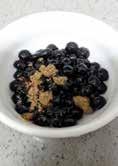

Three Must-Try Mexican Desserts 7 THE GOOD NEWS REVIEW | FEBRUARY 2024
//Adobe Stock

JIYA’S JOURNEY
Living with Cystic Fibrosis
BY MRINALINI LEVIN-SRINIVASAN
Fifth grader and fellow Good News Review staff writer and contributor, Jiya Parekh, is a brilliant, active girl who enjoys yoga, drawing, and reading. Apart from that, she has Cystic Fibrosis.
Can you imagine living your life with Cystic Fibrosis?
In early December, I sat down with Jiya to learn more about this condition, how the Roberts community can be of support, and how she maintains such a joyous outlook.
Cystic Fibrosis is when a build-up of mucus clogs your airways and arteries because of a genetic mutation. Cystic Fibrosis causes EPI, or exocrine pancreatic insufficiency. When EPI occurs, the pancreas cannot get the nutrients it needs to function well.
Scientists have been working to find a cure for the 40,000 Americans who have it. The symptoms of the disease vary from person to person. While one might have persistent coughing, another might experience weight loss.
Cystic Fibrosis has affected Jiya’s lungs, and her lungs have not been doing well lately. To help her lungs function better, Jiya takes medication — albuterol, saline, and pulmozyme - and does frequent breathing exercises.
Because she has not been feeling her best, Jiya has been out of school since Halloween and completing her work from home. One day, she would love to come back to Roberts.
The Roberts community is definitely not the same without her!
Last November, many Roberts families made donations and walked with Team Jiya at Great Strides, an annual fundraiser hosted by the Cystic Fibrosis Foundation.

Team Jiya continues to raise money to help the foundation, which funds scientific research to find a cure for Cystic Fibrosis. In addition to becoming educated about Cystic Fibrosis, joining Team Jiya is a good way to support Jiya.
Jiya will always have Cystic Fibrosis, and she has chosen to live with joy.
She told me, “I don’t complain. But instead, I stay active and focus on my activities.”
That joyous outlook is a great and inspiring lesson for all of us!
*Are you curious to find out more about Cystic Fibrosis or about how you can join Team Jiya? Visit fightcf.cff.org or email Good News Review!

Virus, Bacteria: What is the difference?
BY MARTIN WANG BACTERIA
Bacteria, also called bacterium, is a living single-celled organism. Bacteria are not plants nor are they animals. They were one of the first living organisms to exist on Earth. They can be found in many shapes and sizes, but they usually measure up to a few micrometers (a 1 millionth of a meter). Bacteria eat or feed on dead animals, dead plants, and animal waste.
Where are bacteria found?
Bacteria are found everywhere - in trees, water, volcanoes, 30,000 ft down the ocean, and even outer space. People have bacteria all around the body. In fact, humans have ten times more bacterial cells than human cells. Our internal organs have the least number of bacteria. Although bacteria can almost literally be anywhere in the ga-
laxy, you will normally find them on Earth.
How many people die from bacteria?
7.7 million people or 13.6% of the global population die from bacteria. Diseases like tuberculosis, anthrax, tetanus, leptospirosis, pneumonia, cholera, botulism infection, and 23 more infections are caused by bacteria that usually kill people. Flesh-eating bacteria have become a problem in modern days. It infects the tissues underneath your skin. Flesh-eating bacteria has claimed to be found in seaweed from the beach. It wounds 700-1,150 per year and takes 100 lives per year but rarely children.
Are bacteria more harmful or beneficial?
People may think bacteria is bad and disgusting, but it has many benefits. Bacteria are usually more beneficial than harmful. It helps digest food, protect against infections, and can help
maintain your health. Less than 1% or one out of 100 are actually harmful bacteria. In fact, there are trillions of cells inside your body (roughly 17 trillion in a 10-year-old) but 10,000 kinds of bacteria living inside your body. They also destroy other bad bacteria. Probiotics are beneficial bacteria that fight harmful bacteria.
VIRUSES
Viruses are microscopic organisms. They cannot make new copies of their own so they have to infect hosts, like plants or animals, so they can make more copies of their own. They have DNA and RNA like bacteria, but they do not have a membrane. Viruses do have protein inside them.
Viruses come in two shapes, helical and icosahedral.
The helical shape is spiral-shaped.
The icosahedral is a shape with 20 sides. Un-
like bacteria, viruses do not eat anything.
There are 320,000 thousand kinds of viruses that infect animals. Viruses are everywhere on Earth.
Viruses are not living, but they are not dead either. They do not grow. They cannot make their own energy. They cannot keep themselves in a stable state.
Not all viruses are harmful. Some are even useful. Just like bacteria, viruses can kill bad bacteria.
Sadly, viruses are still more harmful than helpful. 9.4-40 million people die each year. Rabies, which is fatal without swift treatment, and the flu are two dangerous viruses.
Viruses disrupt cell function and kill helpful cells. When the virus invades, the body activates heat to inactivate the virus. This heating is called a fever.
//GNR HEALTH THE GOOD NEWS REVIEW | FEBRUARY 2024 8
Jiya Parekh
CONTINUED ON PAGE 16
Jiya Parekh //GNR
LAB
SCIENCE

Be
Finding Your Personal Style
BY CELINA ABU NASR
Do you ever feel like you are playing dress-up or trying to copy someone else? Are you trying to find your style?
Sometimes, pinning down your style can take years, sometimes a lifetime, and that is totally okay.
The incomparable 102-year-old fashion icon, Iris Apfel, said, “Great personal style is an extreme curiosity about yourself.”
So, to feed our curiosity for self-expression, I sat down with stylist and expert on all things fashion, Celine Atwi.
The first thing I wanted to know was how young people can achieve a great style without blindly following trends.
Celine Atwi: Students and teachers should have the basics of the wardrobe - a good pair of jeans, a pair of pants, a pair of sneakers, T-shirts, and neutral jackets. Then, inject a few trendy pieces here and there just to stay current and up to date.
Because teachers are older and more mature, they know their style better- what they like versus what they don't like. Teachers can add accessories and one funky jacket to their basic clothing.
Accessories are like necklaces, jewelry, and a cute bag. A mix of the basics and a few trendy pieces here and there is perfect.
You can lose your style trying to follow trends. That is called copycatting, like what the influencers, magazines, and stores encourage.
Anyone can be trendy and buy the coolest trends, but few know how to style themselves properly. You can have a classy or preppy style and still be current.
Remember you want a mixture. As an adult, I like to do a mix between affordable fashionlet’s say Target, Zara, H&M, Mango, Gap, Banana Republic, or J.Crew - and then, I would throw in some “investment pieces” (designer pieces). These pieces may be a bit more expensive but last longer, especially shoes, bags, and outerwear.
It’s not thrift or designer. It’s not Zara or
BY THERA CASTELLON FERNANDEZ
Roberts Elementary halls are filled with secrets. You seem to have been hearing the same thing over and over, yet you do not seem to understand what they are saying?
“Dance, Dance, Dance!” Those whispers are talking about the Fifth Grade Dance, of course! But what is the fifth-grade dance all about?
The Fifth Grade Dance is when the dance teacher chooses a genre of dance for the fifth graders to perform on stage. This year, for exam ple, they got 70’s and 80’s Disco.
The fifth graders spent months learning the choreography, Ms. Davenport, the Roberts dance teacher, created for all the dances. Along the way, during dance class, the fifth graders became a stronger and closer team.


providing them with a fun, athletic experience. This dance is a great opportunity for all the fifth-grade kids. It is one of a one-of-akind experience, fun, and encourages teamwork.
I found it interesting when Mrs. Davenport said, “You guys are an example for the kindergarteners on how to not be afraid.”
I understood that we were an example for the kindergartners. Their experience would depend on ours.
Wow! The Fifth-Grade Dance was fun - watching and performing. Thanks to our ancillary teachers Coach A, Ms. Davenport, Mrs. Jenkins, Mr. Lacy, and Mrs. Nelson.
Then, on Thursday, December 13, 2023, we finally got to perform it in front of the whole school during the school day.
But at 6:15 p.m., after waiting in both the P.E. room and the dance room. We lined up in the hallway and made our way to the stage. We danced in front of our parents, family, and friends. The performance benefits dancers by
So, what do you think about these groovy dance moves? Do you have what it takes to join us on the stage?
We, fifth graders, will leave Roberts soon, but as the late 70’s song says: “We are Family...!” and that is the feeling we shared all these years with you all!

The 4th Grade National Park Pass
BY SANAYA KIM EL-MALLAWANY
Do you like free stuff and nature?
Well, fourth graders, you can get a free pass to all the national parks in the U.S.A.
A national park is an acres-wide area of beautiful nature and protected to preserve wildlife.
You even can gaze at stars you have never seen before, like fourth grader, Natalie Tsai.
Natalie has visited Big Bend, Houston’s closest national park - only eight hours away, along with 12 other parks. Wow!
“I saw hares, coyotes, and deer,” shared Natalie about the spring break she spent at Big Bend, where she also saw Mexico and the Rio Grande River!
I have been to five national parks: Death Valley, CA (not in the summer! It can be the hottest area in the country, Grand Canyon, AZ, Joshua Tree, CA, Everglades, FL, White Sands, NM. I loved and recommend them all!
Now, let’s learn more about the National Park Pass so you can have these great experiences, too!
Who can get the pass?
All fourth graders are eligible for the free pass.
How do I get the pass?
The most visited National Parks in 2022
•
•
•
•
•
•
•
•
•
•
Visit the following website: https://everykidoutdoors.gov/index.htm, or just search “every kid outdoors” on your favorite web browser. When you get to the website press the “Let’s Go!” button, scroll down, and press the “Get Your Pass” button. Then, follow the instructions on the pages, and print out your pass.
How much does it cost for other family members to go to the park?
The pass covers the fourth grader and those who are with them in the car.
What are some activities that national park visitors can do?
Kids can participate in the free Junior Ranger Program - where kids can learn all about the national park they are visiting. Complete the activities and get the Junior Ranger badge available at the visitor center in the park. There is also hiking, biking, stargazing, birdwatching, camping, and fishing fun!
Are national monuments included with the pass?
Yes. The pass covers land managed by the Forest Service, the National Park Service, Fish and Wildlife Service, Bureau of Land Management, and Bureau of Reclamation.
How many parks are there?
63 national parks. Most of the national parks are in the west including Alaska, Hawaii, and the American Samoa. 15 national parks are in the eastern part of the USA.
National parks have a lot of natural beauty such as mountains, sunsets, sunrises, nighttime stars, flowers, and a quiet environment. Now, you know all about the national parks and the free fourth-grade national park pass. It is time to explore!
Great Smoky Mountains 12.94 million
Grand Canyon 4.73 million
Zion 4.69 million
Rocky Mountains 4.30 million
Acadia 3.97 million
Yosemite 3.67 million
Yellowstone 3.29 million
Joshua Tree 3.06 million
Cuyahoga Valley 2.913 million
Glacier 2.908 million
//Adobe Stock LIFESTYLE 9 THE GOOD NEWS REVIEW | FEBRUARY 2024
Stock CONTINUED ON PAGE 16 PASSION FOR FASHION
true to yourself.
THE DISCO DANCERS Great Smoky Mountains //Adobe
Why Does War Happen and How Can We Resolve It?
BY SASHA COLLINS
Have you ever wondered how war starts? Did you think that one country shoots at another, and then they start fighting? Or did you think that the leader of the country just says, "I declare war on you?"
To explore these questions, I interviewed Mr. Geoff Anisman, a high-ranking diplomat of the U.S. State Department (and a personal family friend). A diplomat is a government official who represents his or her country in interactions with other countries. (The highest-level diplomat assigned to a particular country is an ambassador.)
Mr. Anisman explained how the United States declares war, "First of all, Congress declares war if there is a majority vote to do so. Though, the president still has a part in a declaration, since he can veto any congressional acts such as a declaration of war."
He went on to share that war can be declared for disputes over territory, unfair rights, racial or gender inequality, or any other political disagreement. Mr. Anisman is experienced in these disputes as he has recently served as the Public Affairs Officer in Ukraine, among other posts in conflict areas.
One type of war, called a civil war, arises from tensions inside a country. These types of
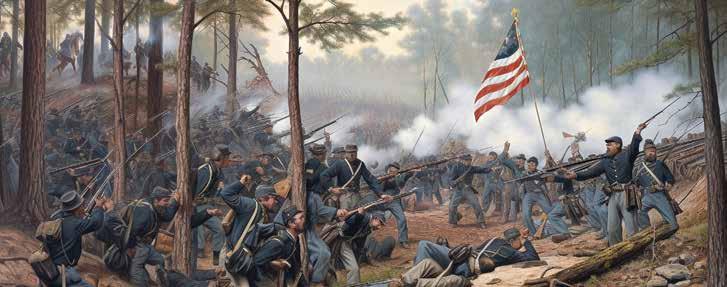
A rendering of the U.S. Civil War
wars may divide a country into two sides, each fighting for what they want. One of the deadliest wars in American history was the United States Civil War, which lasted from April 12, 1861-April 9, 1865, and led to the Emancipation Proclamation, a law that freed American slaves. The country divided itself into the North and South, each side fighting over their views on slavery.
Mr. Anisman said, "People usually would
Update: Former President Donald Trump faces 91 criminal charges
BY ADDISON CAPALI
The first former president to ever go to court for criminal charges, Donald Trump, faces over 700 years’ worth of charges if he was convicted of all 91 charges.
Charges are accusations against someone who is brought to court for a case. These charges will require Donald Trump to defend himself in a court of law.
The cases that accuse Trump of engaging in criminal behavior are different places in the United States - New York, Washington, D.C., Florida, and Georgia. An additional 30 states are fighting against Trump even being able to run for the presidency.
According to a U.S. News article last April, Donald Trump made an appearance in court as he faces 34 felony charges for falsifying business records in New York. The accusations stem from former President Trump paying people he believed would place him in a negative light before the last election in 2016.
Trump faces 40 charges for trying to hide documents that have information about our national security. We call these types of documents classified documents. The United States labels certain documents as classified when they are top secret or confidential, meaning not many people can read the

Trump
information that might be in those documents.
The United States Justice Department brought these charges in this case.
Another Department of Justice case brought against Trump includes four charges. These charges against Trump were made after an investigation that determined he had a part in trying to change the election results of 2020.
In Georgia, Trump faces 13 charges for trying to control or interfere in the election process in that state.
Former President Trump has said that he is “not guilty” for all charges.
These legal allegations are very important criminal cases because if Trump is convicted, he will no longer be able to run in the 2024 election.
Any conviction on any one of these 91 charges would cause a lot of controversy. We will have to see how the cases will go.
Would you vote for a president who faced this many charges?

prefer the peaceful side, and that is where diplomats come in." He stated that when two sides go to war, "Everyone thinks the other side will eventually give up, making a war harder to stop."
Sometimes wars can be resolved easily.
"When one side thinks about the other, and how it is suffering, and not just about itself; and if the other thinks the same thing. Then, they will realize that they both were doing the wrong
A Quick Lesson in U.S. Economics
BY MAKKIYAH KHAN
If I asked you to define “economics,” would you know the definition?
Economics has a lot to do with money - from spending to saving money. Economics is the study of how we produce, spend, and transfer money and things that are valuable.
For example, when a baker bakes and sells bread for his/her customers, that contributes to GDP since the bread production creates a sale. That sale adds value to the economy.
The five factors that make an economy are:
1. The rate of economic growth, which is how much the value of goods and services changes over time.
2. Unemployment - the percentage of adults who do not have jobs
3. Inflation – when prices go up and the value of money goes down
4. Interest and exchange rates – the percentage that will increase on borrowed money and the value of a dollar
5. Commodity prices – the price of oil, steel, gold, and other natural resources
All these factors affect the amount of money families and organizations have and how much they can spend (called purchasing power).
thing, and they can resolve it peacefully," offered Mr. Anisman.
One of Mr. Anisman’s favorite sayings is from General "Mad Dog" Mattis, the 2017-2019 U. S. Secretary of Defense, who said, "The more diplomats I have, the less money I need for bullets!"
Mr. Anisman and I agree that the best way to resolve wars is by making peace diplomatically, talking things out, and not using violence.
Editor's Note
The Good News Review wants to express special appreciation to Ashwin Mohan, our in-newsroom political correspondent, who covered the Israel-Hamas conflict with mature journalistic intellect. Due to the sensitive, yet newsworthy and ongoing nature of the conflict, we elected to encourage Roberts students to ask questions, do research, and ask more questions. We are going to stay curious, too. So, stay tuned.
The Good News REview offers our most heartfelt love and thoughts to those who have lost their lives and to the families who mourn the lives of loved ones lost in this violent conflict.

POLITICS THE GOOD NEWS REVIEW | FEBRUARY 2024 10
// Adobe Stock
BY SASHA COLLINS
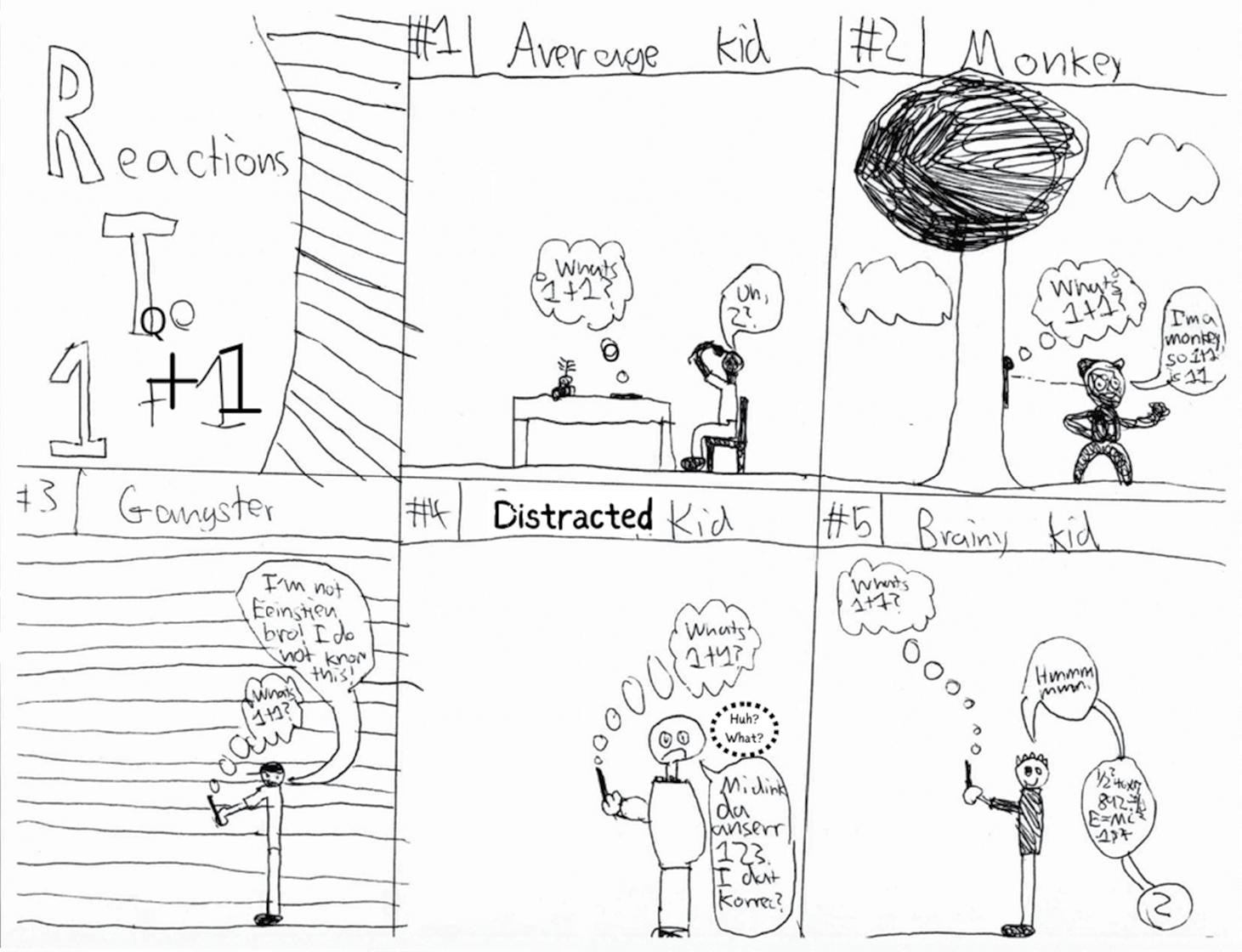
REDICULOUSLY FUNNY 11 THE GOOD NEWS REVIEW | FEB. 2024 thank you to our hard-working and gracious principal, Ms. Epps and our dedicated PTO! for sharing space with The REview.
The Big Brown Sea SCIENCE
Why the Gulf of Mexico looks so dirty.
BY ANNA TSEKOS
If you have ever been to Galveston, Bolivar Peninsula, or anywhere else on the well-known Gulf of Mexico, you must have seen how brown the water looks. Is it really as dirty and polluted as people say?
Turns out, some of the “problems” that you might think humans caused are actually quite natural. According to The Texas View, an online news source, the Gulf’s coloration comes from sediment outflow from rivers that empty into it. A few of those rivers include the Mississippi River, which empties in the Louisiana territory of the Gulf of Mexico, the Atchafalaya River, which also flows south of Louisiana, and the Trinity, which flows into the Gulf from Texas.
Since the fresh water from rivers floats on top of the ocean’s salt water, wind can blow the water and any solid material that settles in the river water, called sediment, around. It, then, shifts the sediment-filled water toward the coast.
Ocean currents also play a big role moving the sediment along the Gulf. The National Oceanic and Atmospheric Association (NOAA) helps us understand that currents describe the movement of water from one location to another.
So, while the direction and force of winds change, currents do not. That is why Florida has clearer waters and whiter beaches than Texas and Louisiana, according to The Texas View.
Heavy rain can also result in sediment coming into the water. Of course, storms do even
CREEPY CRYPTIDS
BY KATE SNYDER
For years scientists and conspiracy theorists have searched for these mysterious creatures, but even now, no one knows. Are they real or not?
Cryptids are mysterious creatures that some people think are real and some people think are just figments of our imagination. The scientists who investigate them are called cryptozoologists.
The field of cryptozoology was founded in the 1950s, but there are stories of cryptids from over 3,000 years ago! Some of the oldest cryptids were the long-necked dragon (which turned out to be a giraffe) and the African unicorn. Today, the African Unicorn is known as the okapi.
Some examples of famous cryptids include Nessie, Sasquatch, and Chupacabra.
Nessie, or the Loch Ness monster, supposedly lives deep in a shadowy lake in Scotland.
The creature is described as having a long neck, flippers, and a tail.
Sasquatch, or as you might call it, Bigfoot, is a humanoid creature that people say is half man, half ape, and runs through the forest at night.
Chupacabra is a hairless creature that seems to be diseased. Its name means “Goat Slurper,” and numerous farmers have complained that the creature has been attacking their livestock and drinking the blood from the poor animals until there is not a single drop left.
Whether they are real or not, cryptids have captured the attention of thousands of people around the world.
So, what do you think? Are they real, or just a hoax?

more than that. For example, Hurricane Harvey in 2017 released 18 years worth of sediment in the Gulf.
How we see the usual blue color of the sea is a completely different story. When most of us think about the ocean, we think of a blue body of water.
But clean water is clear, right? It is!
The UNESCO Ocean Literacy Project explains that sunlight is actually made up of many different colors. So when it hits the water, the blue parts of the sunlight are reflected, and the rest of the colors are absorbed. The reflected light then travels to our eyes, and we see blue. Of course, there are many other factors in determining what color we see, like depth, ground coloration, sedimentation, and plant life in the ocean. But the sunlight is the biggest cause of why we see water as blue.
Although the brown color of the Gulf of Mexico is not a reason to stop swimming in Texas beaches, pollution might cause us to think twice. Fortunately, there has not been an oil spill in years.
However, according to the Galveston County Health District, enterococcus bacteria are common in rain runoff, which cause levels at beaches to spike after periods of heavy rain. These enterococcus bacteria spikes are dangerous because the bacteria can cause infections in humans. Luckily, a federal program, Texas Beach Watch, monitors the Gulf of Mexico’s bacteria levels. You can find more information at TexasBeachWatch.com.
The Gulf of Mexico may be a dirty, brown body of water on the surface (literally), but it is so different than you may think.

THE GOOD NEWS REVIEW | FEBRUARY 2024 12
//Adobe Stock
Galveston
SPORTS
Figure Skater Tenley Albright
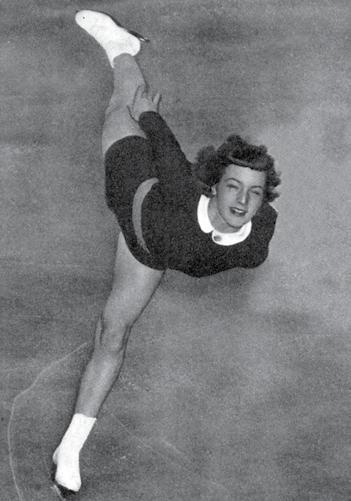
First U.S. woman figure skater to win the gold medal in the Olympics
BY JUNE KIM
Shuzz! She landed it! Tenley Albright was an outstanding woman in United States sports history who landed everything she set out to accomplish.
Tenley Albright was born on July 18, 1935, in Newton Centre, Massachusetts. Albright started skating when she was just eight years old.
She started skating seriously when she was 11 years old. The same year, she also contracted polio/ poliomyelitis.
According to the Center for Disease Control and Prevention website, polio is an infectious disease caused by a virus that can spread from person to person and can cause paralysis. She overcame this dangerous disease.
Everyone knew she was worthy of the Olympics when she won so many world championships.
So, in the year 1956, when Albright got into the Olympics where she skated with her heart and soul, her fans expected her victory. She did not let them down. She won the gold medal! She was the first U.S. woman ever to do so!
According to The 19th News, “Women started figure skating in the Olympics in 1924.” Albright won 32 years after women were even able to go to the Olympics!
She retired in 1956 from figure skating, the year she won the gold medal in the Olympics. Her passion for achievement did not stop there. She became one of the few female surgeons.
According to saturdayeveningpost.com,
“Six percent of all surgeons were women in the 1950s.”
She fought and persisted until she got what she deserved: the Olympic Gold Medal and becoming a surgeon! The gold medal she earned blazed a trail for other women in U.S. figure skating.
“There were 14 U.S. women figure skaters to win gold in the Olympics after Albright,” according to statista.com.
We are going back to Cortina, Italy in 2026 where Albright won for the United States.
Do you think anyone could be as good as her in Cortina, Italy, again?

MLS 2024: Teams to Cheer, Players to Watch
America’s biggest club soccer competition
BY NASHWAN NIMIT
You are in a full stadium. The atmosphere is tense. It is 1-1 against Inter Miami. The Dynamo have gotten a penalty and then… GOAL! Houston Dynamo have just won the MLS Cup! This imaginary scenario is realistic with the run to the semis Dynamo made in 2023.
The regular season of Major League Soccer (MLS) started this month, February, and ends in October. You can watch this entire season on Apple TV with the MLS Season Pass.
The final is on December 7, 2024. Despite being a long season, it is guaranteed to be an
epic season.
MLS works similar to Major League Baseball. The teams with the most wins advance to the playoffs, where teams win or are handed an
elimination.
The league is now full of talented players, including Hany Mukhtar, Luis Suarez, Lionel Messi, Jordi Alba, and Sergio Busquets. In soc-
The Undetectable Difference
A glimpse into the turf-grass debate
BY SANJAY MEKAPATI
Have you ever wondered if the grass under your feet is really grass?
Turf is an artificial grass that is human-made and can be formed into specific shapes and sizes to fit the plot/area of land.
Turf is preferred in some circumstances because turf is not affected by rain and other disturbances. Turf also allows players to dig their feet into
the ground for stability, and because it has rubber underneath, it maintains a flat and stable position.
Grass does get affected and damaged by players digging their feet into the ground or when it rains mid-game.
Grass is preferred in some circumstances. Grass is typically most preferred while playing baseball and softball during the summer as it helps cool the players.
In an October 9, 2023 story published by AP News, team doctor for Stanford football and San Jose Earthquakes soccer, Dr. Calvin Hwang, said, “The newer generation turfs may be safer than older generation turfs.” Dr. Hwang treats players
whose home fields are both grass and concludes that he believes, even with the technological advances of turf, that grass is safer.
Seventeen teams out of 32 in the National Football League and six out of 29 MLS teams play exclusively on turf.
The debate is pretty evenly split.
Our Roberts field hosts many pick-up football and soccer games, and our field is grass.
So, should our soccer/football field get turf or remain grass? Let us know what you think.

cer, good players give their team an edge in competitions.
This fact is why Inter Miami is the favorite to bring home the cup with skilled players Messi, Suarez, Alba, and Busquets.
Other teams who are in it to win it are LAFC, FC Cincinnati, and Seattle Sounders.
Last season, the Columbus Crew won the championship and are in good shape, but no one has won two times in a row for 12 years.
Think about that, soccer fans, because it is going to be spectacular watching to see who will emerge victorious this year. With such great players, it is tough to decide who to cheer for.
Although Lionel Messi said, “There are more important things in life than winning or losing a game,” watching your favorite team win is a lot more fun.
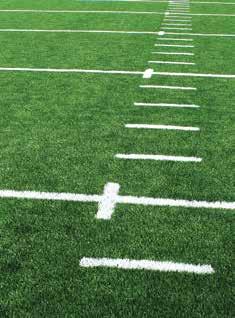
//Wikipedia
13 THE GOOD NEWS REVIEW | FEBRUARY 2024
Albright
THROWBACK MOMENTS IN SPORTS
HISTORY-CHANGING
Is it turf? Or grass? //Adobe Stock
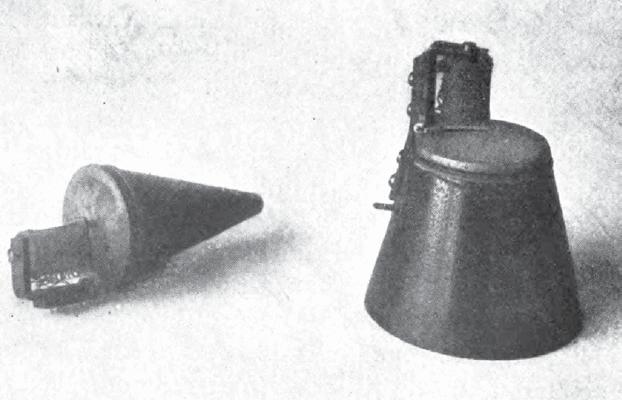

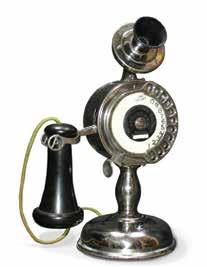

The Evolution of Phones
BY MAKKIYAH KHAN
Have you ever wondered how phones were before Queen Elizabeth II was alive?
In both Boston, MA and his family home in Canada, Alexander Graham Bell made the first phone. He received a patent for his invention in 1876. He called it the “Bell’s Box Telephone.”
Have you heard of the big company AT&T, originally named “Bell Telephone Company?” Bell started the company on July 9, 1877.
The first phones had two parts, the transmitter and the receiver. The transmitter was made up of three parts, a drum-like device, a needle, and a battery.
Bell created the phone because he wanted to be able to send vocals and other sounds to the deaf.
U.S. Cities
Tech-Advanced Cities in the United States
BY RAY LEE
Throughout the years, we have enjoyed the growth of technology spreading in the U.S. along with the rest of the world. Some cities, however, are leading the nation in becoming tech-advanced cities. According to Businessinsider.com, the top five technologically advanced cities in the U.S. and why.
5. Chicago, Illinois. Increasing highly technologically advanced jobs
4. Boston, Massachusetts. Focusing on building industries in robotics and biotech. MIT, Havard, and Boston take advancements in technology to the next level.
3. Los Angeles, California. Increasing in tech sector jobs.
2. New York City, New York. Unbelievably progressive in advanced infrastructure. Tech jobs are booming, too.
1. San Francisco, California. The always-on-
In 1889, William Gray invented the public pay phone which debuted in a bank in Hartford, Connecticut.
Unfortunately, he invented the pay phone because no one would let him use a phone to call the doctor.
A payphone is a phone that requires payment for phone calls.
Prior to 1892, when Almon Brown Strowger invented the automated telephone switching system with rotary dial in Kansas City, MO, human operators connected the caller to the place the caller wanted to reach.
Strowger invented this system because of the need for an automated, user-controlled way of directing a phone call. These phones have a disk with ten holes around the border with numbers in each hole that a caller would use to dial
Technology
top tech city is home to Silicon Valley, which is a hub for the headquarters of tech startups and global tech companies such as Apple, Google, Meta, Facebook, and Ebay.
I interviewed 7th grader, member of the founding class of Good News Review, former Chief of the Technology Section, and my brother, Eunchan Lee. He recently completed a project about a technologically advanced city, Dubai, located in the United Arab Emirates.
What would you describe as a technologically advanced city?
It should be clean. It should have some advanced technology like high-efficiency room air conditioners available to residents like in Dubai, and it should have artificial intelligence otherwise known as A.I.
How do technological advancements improve a citizen's life?
It typically makes the citizens’ life safer, more luxu-
a phone number.
In 1973, Martin Cooper invented the first cell phone when he worked at Motorola in New York, NY.
Fun fact he was born in Chicago, Illinois, just like me!
Cooper invented the cell phone for long-distance calls. He imagined a day when people would have personal phone numbers for portable phones as opposed to phone numbers for a specific place, like a business or home. These first cell phones had a circuit board with an antenna, a liquid crystal display known as an LCD, and a keyboard.
In 1994, Frank Canova invented the IBM SIMON, which was a handheld touchscreen personal computer that the tech industry regards as the first smartphone.
In 2007, Steve Jobs invented the modern smartphone. Smartphones revolutionized the cell phone industry because they offered features that had never been seen before, such as internet access, apps, and cameras.
Suddenly, cell phones became devices that people could not live without. According to Exploding Topics, a leader in discovering “the hottest new trends,” there are 6.94 billion smartphones in use in the world. Most are Androids. 92% of Americans have at least one smartphone while only 9.7% of North Korea’s population owns smartphones. Wow!
From 1877 to 2007, we experienced 130 years of tech evolution – going from Alexander Graham Bell’s telegraph to Steve Jobs’s smartphone. The improvement throughout these years is revolutionary!
BY MOHAMMED KHOUQEER
Have you ever wondered if robots would take over, when will they take over, and more importantly will there be human life?
Imagine with me.
It’s the year 2050. I am being watched. Everyone is being watched. They are everywhere controlling us and every other living thing. Who are they you might ask? They are the robots.
You may think this predicted scenario is an exaggerated introduction to a movie script.
But as Elon Musk, tech founder and CEO of Space X and former CEO of Tesla, said, “The pace of progress in artificial intelligence…is incredibly fast. Unless you have direct exposure…you have no idea how fast—it is growing at a pace close to exponential. The risk of something se riously dangerous happening is in the five-year time frame. Ten years at most.”
How do you think robots look and behave in the past, present and in the future?
Stay curious.
www.wevolver.com/article/a-history-of-in-
www.rd.com/article/real-robots/


Making a Splash in the World of
Bell telephone transmitters and receiver //Wikimedia Commons Pay phone Strowger phone //Sparkmuseum.org Cell phone //Adobe Stock TECHNOLOGY THE GOOD NEWS REVIEW | FEBRUARY 2024 14 My Top 5 webpages to learn more about robots
Will Robots Take Over the World?
dustrial-robots
https://ecorobotics.com/the-evolution-ofrobotics-a-brief-history/ www.asme.org/topics-resources/content/5-most-influential-robots-in-history
www.forbes.com/ sites/forbestechcouncil/2023/08/14/ the-dawn-of-humanoid-robotics-a-glimpse-into-the-future/?sh=3e2f891672f f CONTINUED ON PAGE 16
WILLIAM HALLET GREENE A Weather Feature Story
BY KYLE HU AND SANJAY MEKAPATI
Have you ever heard chatter from the living room, gone to see what it was, and found an African American journalist reporting the weather on the television?
Well, that was a meteorologist.
And according to Zippia, a website that says it is an expert on careers, as of 2021, Black meteorologists comprised just 4.1% of all American meteorologists. In other words, for every 100 meteorologists, there are only four who are African American.
So, it is a pretty rare sight to see and learn the week’s weather from an African American meteorologist.
Modern-day African American meteorologists have William Hallett Greene, the man regarded as the first African American meteorologist, to thank.
According to the City University of New York Libraries website, William Hallett Greene graduated from City College, now called City University of New York, as the first African American to graduate in 1884. He received a Bachelor of Science and wanted to enter the army.
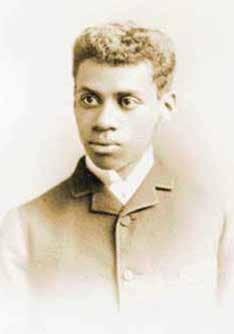
Although he scored exceptionally on the entrance exam, Greene faced immense opposition and pressure. He had to have lots of patience to be able to go down in history as the first African
American member of the U.S. Army Signal Corps in the 1880s.
With the Signal Corps, he received training in telegraph and cloud and wind patterns – making him the first man in uniform to study meteorology.
The Signal Corps is the branch of the United States Army that handles all the information systems for the command of all the military forces. The U.S. Signal Corps managed aviation, weather forecasting, and military intelligence. The branch was the pioneering department for the National Weather Service.
Greene faced immense pressure and opposition. He had to have a lot of patience to be able to get into the Signal Corps, especially as the first African American station chief. People like General William Babcock Hazen, who initially fought to keep Greene out, made it difficult for him to feel normal and also made it hard for Greene to remain in his position.
William Hallett Greene also opened the door for African Americans to enlist in the Hospital Corps, Ordinance Corps, and the Quartermaster and Commissary departments.
William Hallett Greene was a trailblazer!
What is meteorology? And who are meteorologists?
Meteorologists are people who observe, understand, and predict the weather. These people help keep us safe by telling us the weather we should expect and how to dress accordingly. They can warn you if a storm is coming. They can tell you if today will be hot or cold. We call that the temperature.
Meteorologists are scientists who study meteorology.
Meteorology is the study and forecasting of weather. An important branch of weather forecasting is aquatic weather forecasting, as it relates to forecasting nearshore safety and atmospheric interactions with large bodies of water.
Do you want to become a meteorologist and forecast the future weather?

15 THE GOOD NEWS REVIEW | FEBRUARY 2024
//Wikipedia WEATHER
Greene
Want to be a part of next year's 2024 Texas Family Literacy Festival as a sponsor, vendor, partner, author, performer or volunteer? Contact us at hello@ourstorysquare.com It is never too early for Story Square planning!
Roberts Elementary Crossword
CROSSWORD
Across
2 Good News REview encourages students to “Stay -U -U-"
ACROSS
5. The school newspaper: Good News
7. Name That
2. Good News REview encourages students to “Stay -U---U-"
5. The school newspaper: Good News -------
10. Ms. Epps is our
7. Name That ----
12. Roberts is an “ ” school
10. Ms. Epps is our ---------
12. Roberts is an “--” school
13. International ; Largest School Event in Fall semester
13. International --------; Largest School Event in Fall semester
14. Where we grow vegetables: International
14. Where we grow vegetables: International
Down
1. Robert’s Mascot
DOWN
3. Park: open for all after school
1. Robert’s Mascot
4. Black History Month
3. ----- Park: open for all after school
4. Black History Month
6. 14 February: Day
WORD SCRAMBLE
PLACES AT ROBERTS
FASHION
CONTINUED FROM PAGE 09
Prada. It’s not vintage or new. It’s all about the mix.
Celina: How can students and teachers create and own their style?
1. R A B R Y I L
8. Bee
6. 14 February: ----- Day
8. -------- Bee
9 Club is for 4th and 5th graders
9. ---- Club is for 4th and 5th graders
11. One of the fundraising events: Fun ---
11. One of the fundraising events: Fun
DOWN: 1. MUSTANG; 3. SPARK; 4. FEBRUARY; 6. VALENTINES; 8. SPELLING;
ACROSS: 2. CURIOUS; 5. REVIEW; 7. BOOK; 10. PRINCIPAL; 12. IB; 13. FESTIVAL;
ANSWERS:
2. S O M O S A L C R
3. G R Y U N O D A P L
4. K E R S L O C
5. F A A T E E R I C
6. E I D F L
7. E C N E I C E B A L
8. E E I O R P T N C
9. L G F O E A L P
10. E L C C I R V E D R I
11. B A L K C O T P
12. L A L A Y W H
13. M O U T E R P C B L A ANSWERS: 1. LIBRARY; 2. CLASSROOM; 3. PLAYGROUND; 4. LOCKERS; 5. CAFETERIA; 6. FILED; 7. SCIENCE LAB; 8. RECEPTION; 9. FLAGPOLE; 10. CIRCLE DRIVE; 11. BLACK TOP; 12. HALLWAY; 13. LAB COMPUTER
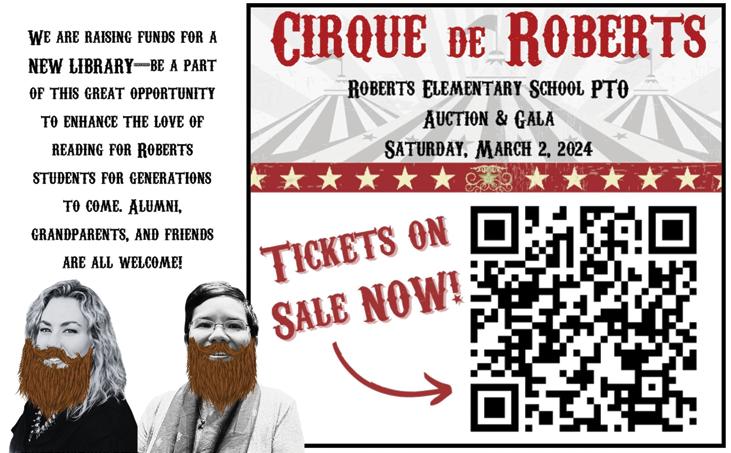
Celine Atwi: I give my clients one exercise. I ask them to create a mood board. The mood board usually includes everything that they are attracted to. It could be a color palette, interior design, outfits, colors, fabrics, musical taste, and design or art elements. The mood board represents their personality, universe, and style.
Now that we know that our style comes from being curious about who we are, go, be curious, and create and own your style! I cannot wait to see your YOU-niqueness!
SCIENCE LAB
CONTINUED FROM PAGE 08
SUMMARY: WHAT ARE THE DIFFERENCES BETWEEN VIRUSES AND BACTERIA?
Bacteria are single cells that can survive on their own, inside or outside the body. Viruses cause infections by entering and multiplying inside the host's healthy cells. It can be difficult to know what causes an infection because viral and bacterial infections can cause similar symptoms. Viruses are smaller and are not cells. Unlike bacteria, they need a host such as a human or animal to multiply. Viruses cause infections by entering and multiplying inside the body's healthy cells. Bacteria are bigger than viruses.
*Let’s stay curious: What was a recent virus that became a pandemic?
What type of careers learn about the viruses and bacteria that affect our human body?

TECH CITIES
CONTINUED FROM PAGE 14
rious, and more comfortable. For example, Dubai has robots powered by A.I. to help citizens with their daily lives.
Technologically advanced cities are good and bad. For example, in San Francisco tech advancements caused a growth in the population. But, at the same time, those advancements changed the city population and cost of living. Everyday living is more expensive than in the past. So, with that, some people become wealthy because of tech, but the cost of living can increase the poverty there and give way to the haves and have-nots.
If you want to become an engineer or architect, do not always stick to the good or the bad. Think about future impacts or how technology can affect the ecosystem of a city or environment. What do you think about tech advancements? How can these advancements affect YOU?
Stay curious!

THE GOOD NEWS REVIEW | FEBRUARY 2024 16
GAMES
1. 2. 3. 4. 5. 6. 7. 8. 9. 10. 11. 12. 13. 14.
14. GARDEN
9. MATH; 11. RUN







 FRAN-VICTORIA STEPHENS EDITOR
FRAN-VICTORIA STEPHENS EDITOR



































